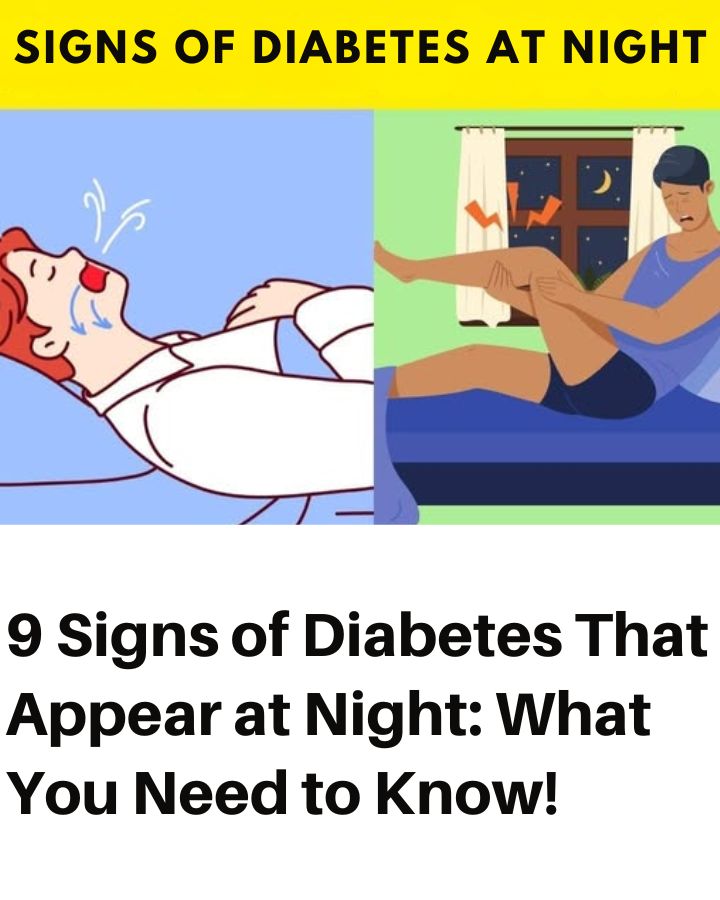4️⃣ Restless Legs Syndrome
Restless legs syndrome (RLS) is a neurological condition linked to diabetes. It causes an uncontrollable urge to move your legs, often accompanied by uncomfortable sensations. Elevated blood sugar levels can damage nerves (a condition called peripheral neuropathy), causing these symptoms. Proper diabetes management can help alleviate RLS symptoms.
5️⃣ Sleep Apnea
Sleep apnea, characterized by repeated interruptions in breathing during sleep, is more common in people with diabetes. Obesity, a common risk factor for both conditions, can cause airway obstruction. Insulin resistance and metabolic disturbances from diabetes can also exacerbate sleep apnea.
6️⃣ Increased Thirst
Waking up frequently with a dry mouth and intense thirst, known as polydipsia, is a common diabetes symptom. This occurs due to the kidneys working harder to eliminate excess glucose, leading to dehydration. Keeping blood sugar levels stable through diet, exercise, and medication can reduce this symptom.
7️⃣ Fatigue
Persistent fatigue, even after a full night’s rest, may indicate diabetes. When the body cannot use glucose effectively for energy, it results in constant tiredness. Managing blood sugar levels and maintaining a healthy lifestyle can improve energy levels.
8️⃣ Dry Mouth
Xerostomia, or dry mouth, is another nighttime symptom linked to diabetes. High glucose levels can reduce saliva production, causing discomfort. Good oral hygiene, staying hydrated, and using saliva stimulants like sugar-free gum can help alleviate dry mouth.
9️⃣ Sleep Disorders
Insomnia and other sleep disturbances can result from unstable blood sugar levels. Hypoglycemia may cause night sweats and trembling, while hyperglycemia can trigger frequent urination. Consistent blood sugar management and behavioral therapies can improve sleep quality.
🎯 9 Warning Signs of Diabetes You Might Be Overlooking
Diabetes often develops silently, with subtle signs that can be easily missed. Here are nine additional symptoms that could indicate prediabetes or diabetes:
1️⃣ Darker Areas of Skin
A dark, velvety patch of skin, especially around the neck, armpits, or groin, may indicate insulin resistance. This condition, known as acanthosis nigricans, is often an early warning sign of diabetes. Consult a healthcare professional if you notice these patches.
2️⃣ Unintentional Weight Loss
Unexpected weight loss despite increased hunger can signal diabetes. This occurs when the body cannot absorb glucose properly, leading to the breakdown of fat and muscle for energy.
3️⃣ Blurred Vision
High blood sugar levels can affect the lens of the eye, leading to temporary vision changes. Fluctuating glucose levels cause the lens to swell, impairing focus. Blurred vision should not be ignored and warrants a medical evaluation.
4️⃣ Outbreak of Small Bumps
Elevated triglyceride levels due to diabetes can lead to eruptive xanthomatosis, characterized by small, yellowish bumps. These usually appear on the buttocks, thighs, elbows, and knees. They are a sign of uncontrolled diabetes and require medical attention.
5️⃣ Unusual Fatigue
Chronic fatigue can stem from the body’s inability to convert glucose into energy efficiently. Stabilizing blood sugar levels through lifestyle adjustments can alleviate this symptom.
6️⃣ Heightened Thirst and Frequent Urination
Excess sugar in the bloodstream causes the kidneys to work harder, leading to increased thirst and urination. These signs, though subtle at first, become more prominent as diabetes progresses.
7️⃣ Skin Tags
Skin tags are small, benign growths that often appear on the neck, underarms, and groin. While common, an unusually large number may suggest insulin resistance or type 2 diabetes.
8️⃣ Slow Healing Cuts and Wounds
High blood sugar impairs circulation and weakens the immune system, causing slow wound healing. Poor healing may indicate underlying diabetes and should prompt medical consultation.
9️⃣ Itchy Skin
Tingling, numbness, or itching in the extremities can signal diabetic neuropathy—nerve damage caused by prolonged high blood sugar. These sensations often affect the hands, arms, and feet.
✅ In Summary:
Recognizing these nighttime signs and subtle symptoms of diabetes can lead to early diagnosis and improved management. Regular blood sugar monitoring, a balanced diet, and medical supervision are key to preventing and controlling diabetes-related complications. If you experience any of these symptoms, consult a healthcare professional promptly for evaluation and personalized care.

